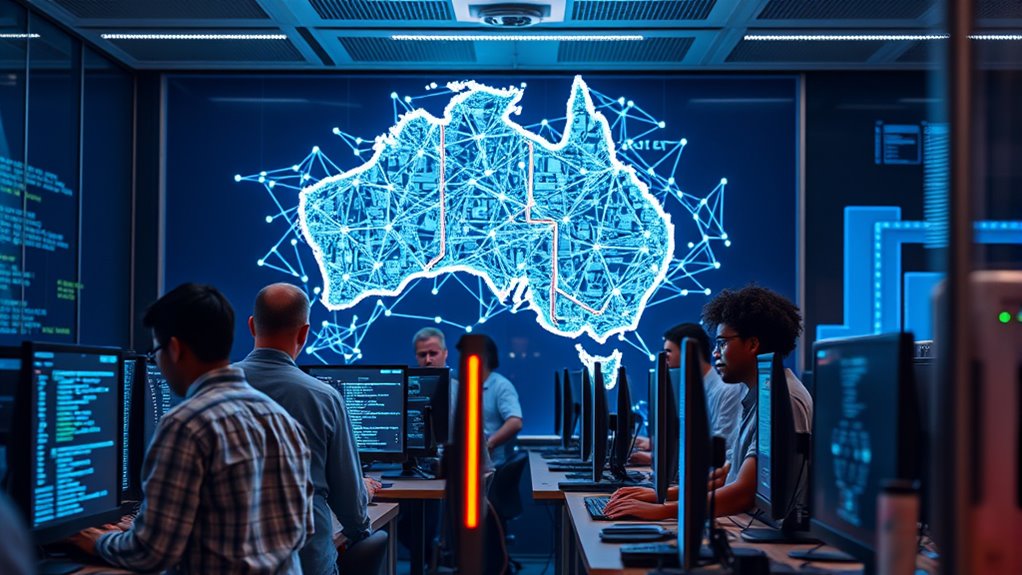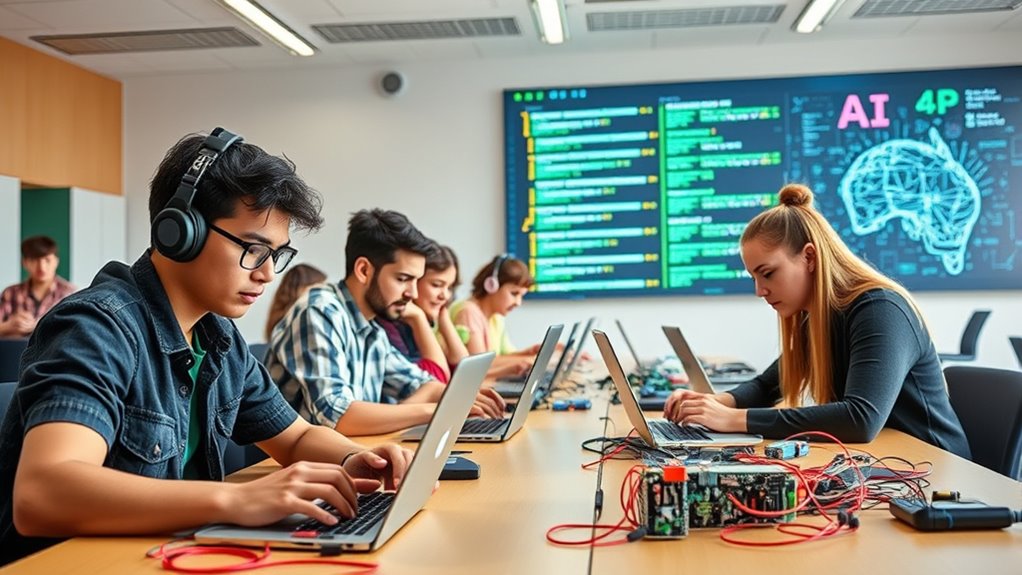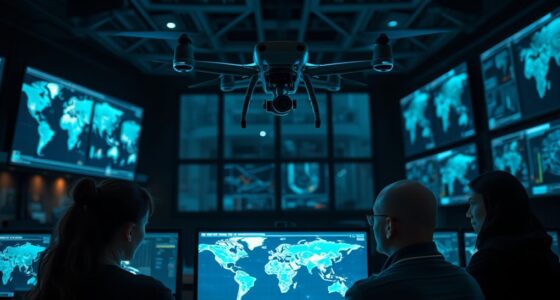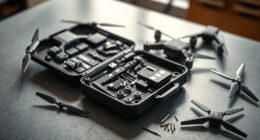Australia’s ASD has a rich history, starting as a secretive codebreaking agency during wartime. Over time, it evolved into a leading center for cybersecurity and AI innovation, shaping Australia’s tech landscape. Today, the agency combines its skills in intelligence and technology to tackle modern threats. If you want to discover more about how ASD transformed from wartime codebreakers into AI engineers, there’s more fascinating history and advancements ahead.

Australia’s ASD has evolved dramatically over the decades, shifting from secretive codebreakers during wartime to leading innovators in artificial intelligence today. When you think of the agency’s early days, you might picture cryptographers working behind closed doors, deciphering enemy messages during World War II and the Cold War. Back then, secrecy was paramount, and their work was often shrouded in mystery. Yet, these efforts laid the foundation for a modern agency that now pushes the boundaries of technology and cybersecurity. Today, you see ASD embracing cutting-edge tools like machine learning, big data analysis, and AI to protect national security and advance Australia’s technological capabilities. They’ve transitioned from simply decoding enemy signals to developing autonomous systems and cyber defense mechanisms that keep the country safe in an interconnected world.
You might not realize how integral the agency has become in shaping Australia’s digital future. As a key player in national defense, ASD now collaborates with universities, tech startups, and global partners to foster innovation. They invest heavily in research and development, recognizing that the future of intelligence lies in artificial intelligence and automation. This shift isn’t just about keeping up; it’s about staying ahead. You can imagine the agency’s engineers and scientists working tirelessly to create AI tools that detect cyber threats faster than ever before, or develop algorithms that analyze vast amounts of data to predict and prevent attacks before they happen. Their work ensures that critical infrastructure, government networks, and private sectors remain secure against increasingly sophisticated adversaries.
Furthermore, ASD’s transformation reflects a broader understanding of intelligence work in the 21st century. It’s no longer solely about espionage and signals intelligence; it’s about harnessing technology’s power to safeguard national interests. You see them leveraging data analytics, robotics, and AI-assisted decision-making to give Australia an edge in global security. Their capabilities now extend beyond traditional espionage, encompassing cyber warfare, information security, and even counter-terrorism strategies. This evolution demonstrates how a once secretive, code-focused agency can become a hub for innovation, attracting talented engineers and scientists passionate about shaping the future of intelligence.
In essence, ASD’s journey from codebreakers to AI engineers highlights how adaptation and technological advancement are vital for national security. They’ve transformed from clandestine cryptographers to pioneers of artificial intelligence, ensuring Australia remains resilient in an ever-changing digital landscape. As you observe their progress, it’s clear that their success depends on continually evolving and embracing the potential of new technologies. What’s certain is that their legacy of innovation will continue to grow, securing Australia’s place at the forefront of global intelligence and technological development.
Frequently Asked Questions
How Does Australia’s ASD Collaborate Internationally With Other Intelligence Agencies?
You see, Australia’s ASD collaborates internationally through various mechanisms, including intelligence sharing agreements, joint operations, and participation in global alliances like Five Eyes. They work closely with counterparts in the US, UK, Canada, and New Zealand to exchange information, coordinate efforts, and combat threats. These partnerships enable you to leverage collective intelligence, enhance security, and stay ahead of emerging risks in a rapidly evolving global environment.
What Specific AI Projects Has Australia’s ASD Pioneered Recently?
You’ll find that Australia’s ASD has recently pioneered advanced AI projects like autonomous threat detection systems and machine learning algorithms to enhance cybersecurity. They’ve developed cutting-edge facial recognition tech for national security and predictive analytics to identify emerging cyber threats. These innovations help safeguard national interests and improve intelligence capabilities. By pushing the boundaries of AI, ASD stays at the forefront of technological advancements, ensuring Australia remains secure in an increasingly digital world.
How Does ASD Recruit and Train New Technology Specialists?
You’re right on the ball to ask how ASD recruits and trains tech specialists. They actively seek out talented individuals through targeted programs, competitive hiring processes, and partnerships with universities. Once onboard, they offer rigorous training, mentorship, and hands-on projects to sharpen skills. Think of it as hitting two birds with one stone—bringing in fresh talent while building a highly skilled workforce ready to tackle complex cybersecurity and AI challenges.
What Ethical Considerations Guide Asd’s AI Development Initiatives?
You should know that ASD’s AI development is guided by strict ethical principles, including ensuring privacy, security, and transparency. They prioritize responsible AI use, avoiding bias and discrimination, and adhere to national and international laws. You’re encouraged to focus on the societal impact, making sure AI benefits everyone while safeguarding rights. These considerations help maintain trust and uphold integrity as they innovate in AI technology.
How Has Asd’s Role Evolved in Cybersecurity Over the Past Decade?
Over the past decade, ASD has shifted from traditional codebreaking to proactive cybersecurity leadership. You see them developing advanced threat detection, strengthening digital defenses, and collaborating internationally. They analyze risks, anticipate attacks, and build resilient systems. Their focus moves from reactive responses to proactive prevention. You witness ASD integrating AI and machine learning, transforming cybersecurity strategies, and safeguarding national interests, all while adapting to an ever-evolving digital threat landscape.
Conclusion
So, you’ve seen how Australia’s ASD shifted from stealthy codebreakers to savvy AI engineers. Their story shows that skill, strategy, and spirit sustain success. As you step forward, remember: adaptability and ambition are your allies. Embrace evolving expertise, ignite innovation, and inspire impact. Because in this world of wonder and warfare, your willingness to work, wonder, and win will define your destiny. Stay sharp, stay savvy, and soar ahead!









